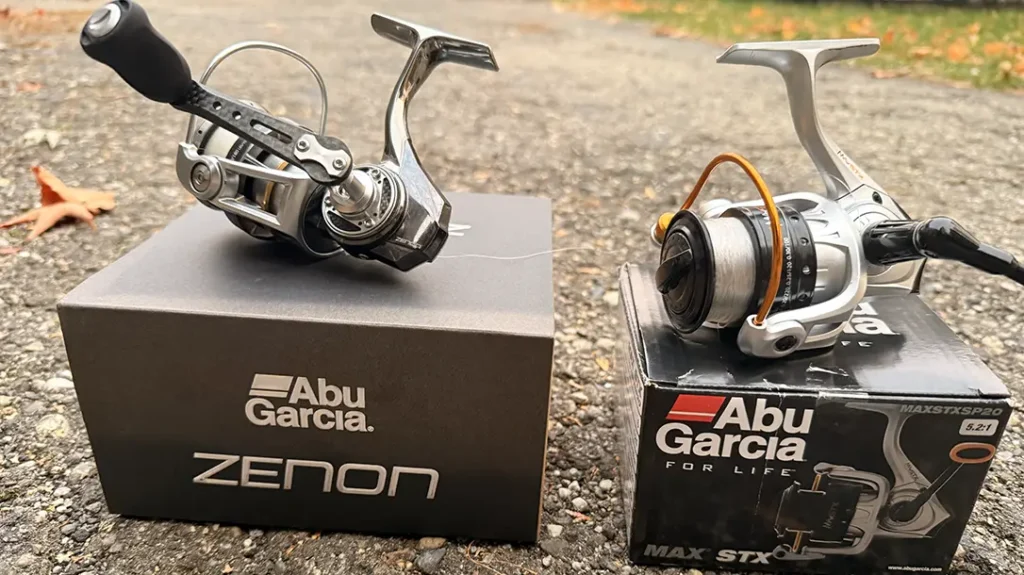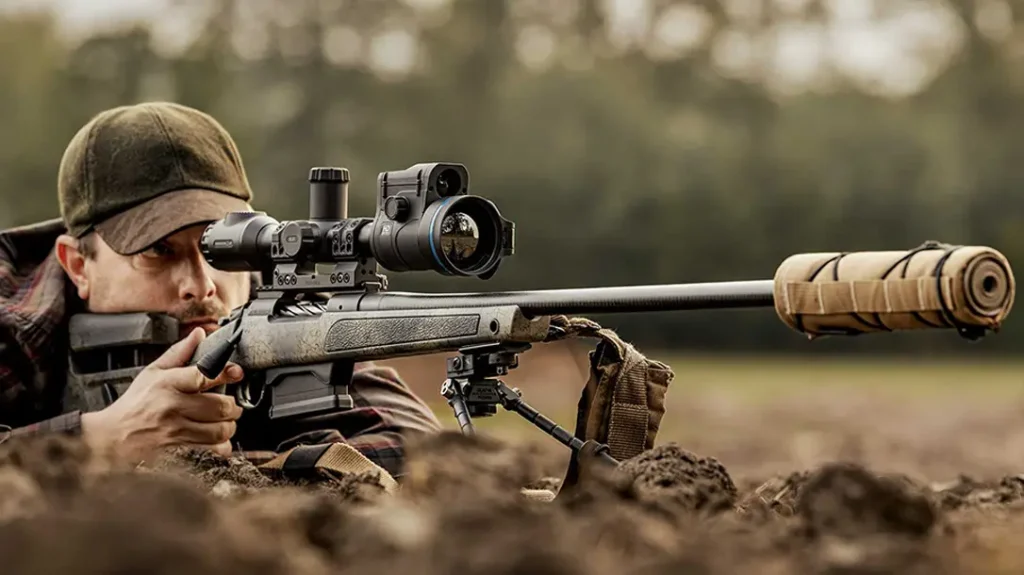While I thoroughly enjoy my more exotic precision rifles, I spend most of my time behind standard bolt actions—a Remington Model 700, a Winchester Model 70 or one of the many rifles that use these actions. Advancements in manufacturing technology have made these rifles astoundingly accurate, incredibly rugged, ergonomic and boringly reliable. But I wanted to create a one-of-a-kind rifle that could handle a number of tasks well, including hunting, tactical deployments and long-range matches.

This project actually started with the stock—Accuracy International’s AX chassis system. I’ve used several complete Accuracy International rifles and chassis systems over the years, and the AX represents the pinnacle of the company’s designs. Shooters can adjust the length of pull, cheek height, buttpad and pistol grip, making it a perfect choice for prone shooting—the most common setup for police countersnipers. The buttstock also folds to the right side, making it easier to transport rifles with longer barrels and sound suppressors. Up front, the forward handguard offers Picatinny rails and KeyMod slots for accessories. All told, this chassis has excellent ergonomics without being too heavy.
As for the chambering, I decided on the .260 Remington because it’s light on recoil while being laser-accurate with a flat trajectory at distance. It’s currently one of the most common chamberings among Precision Rifles Series (PRS) competitors, and it’s very effective for hunting. As for tactical uses, some Special Missions Units are testing it for sniping details. Finally, the .260 Remington is easy to reload, and several companies are making dedicated loadings. For example, Prime Ammunition’s 130-grain Open-Tip Match (OTM) rounds are accurate, consistent and relatively affordable compared to other match-grade loads. Federal’s 142-grain Gold Medal Match BTHP load has acquitted itself well, and Nexus offers a139-grain Lapua Scenar BTHP load that’s exceptionally accurate at moderate velocities.
Advertisement — Continue Reading Below

I knew I wanted a Proof Research carbon-fiber-wrapped barrel right off the bat, as I’ve used these barrels in various chamberings with stellar results. On top of being very precise, they can shave 2 pounds or more from your rifle’s overall weight. In fact, I’ve used Proof Research barrels to produce numerous 0.3-inch groups at 100 yards—that’s about as accurate as my capabilities allow. And given that I wanted to use this precision rifle for a number of roles, I settled on a 24-inch, carbon-fiber-wrapped barrel for the project.
- RELATED STORY: The Surgeon Is In – Testing Out the Surgeon CSR Rifle
My last big decision revolved around the action, and this is where Surgeon Rifles came into play. I recently tested one of the company’s Scalpel rifles—equipped with the renowned, Remington 700-style 591 short action—and wanted my build to mostly copy it. That rifle’s only real drawback at the time was its barrel, which was too heavy due to its MTU taper.
After a quick conversation, Surgeon agreed to not only provide one of its 591 short actions, but also put everything together for me. The company also provided a muzzle brake that would work as an adapter for a Thor PSR suppressor from AWC Silencers, a sister company. Timney provided one of its two-stage triggers to complete the basic package, and I sent everything off to Surgeon Rifles to create a multi-mission Scalpel.
Advertisement — Continue Reading Below
A Closer Look

Upon receiving my finished Surgeon Scalpel, I was immediately impressed with its fit and finish. Surgeon had expertly completed the Proof Research barrel blank, added the PSR brake and mated it to the 591 short action. This action holds a fluted, single-piece bolt that is incredibly strong, consistent and glass smooth in operation. The company added a large bolt knob for easy manipulations in adverse conditions or while wearing gloves.
The two-stage Timney trigger was tuned for a 1-pound first stage and a 2.5-pound second stage, which is perfect for the roles in which I intend to use this rifle. A five-round Accuracy International magazine was included, and all of the metal components were given a Flat Dark Earth Cerakote finish to match the Accuracy International AX chassis system.
Advertisement — Continue Reading Below
For targeting, I added a Kahles 4-24x56mm K624i scope using a set of Seekins Precision rings. With an AMR reticle mounted in the first focal plane, this scope has everything you need for long-range engagements. The glass is crystal clear, the zero-stop knobs are easy to use, and the overall package is slim and light by comparison. It’s one of the most popular scopes on the PRS circuit, and I’ve used this particular model on numerous rifles.
I customized the scope by adding a JEC Customs Target Locating Device (TLD) mount to hold a Trijicon RMR. The TLD includes a level, and positioning a reflex sight in such a way allows you to spot targets downrange without adjusting your scope’s magnification. I also added AADMOUNT flip-up scope covers, which are strong and fold flat against the scope, and David Tubb’s Distance Reduction Indicator (DRI), which makes it easier to calculate deep angle adjustments without a calculator.
I used an AWC Thor PSR suppressor for some of the testing and switched between Atlas and EliteIron bipods, and for stability in less-than-pristine positions, I supported the rifle with a Hog Saddle mounted on a tripod.
Advertisement — Continue Reading Below
Pro-Grade Precision

As expected, the Surgeon Scalpel was impressive. At the range, my best five-shot group at 100 yards came with Prime Ammunition’s 130-grain OTM load. This ammo is designed for use in magazine-fed weapons, and it’s been extremely consistent among the various rifles I’ve tested. Every five-shot group with this load was tighter than 0.4 inches, with my best cluster measuring exactly 0.25 inches. The Nexus 139-grain rounds came in second place with a best five-shot group measuring 0.3 inches. The worst five-shot group at 100 yards—produced with a handload I concocted using Hornady 143-grain ELD projectiles—measured just 0.45 inches. This kind of accuracy is as about as good as I can shoot these days in real-world conditions. I have done better on occasion, but not in a while. In other words, Surgeon’s Scalpel is more accurate than most shooters’ capabilities.
I got another opportunity to test the rifle at a Follow Through Consulting Night Fighter course in Teasdale, Utah. Though this course is designed for carbines, I was able to test the rifle’s long-range capabilities under some harsh conditions, with 12-inch steel targets set at unknown distances out to 1,100 meters. After zeroing the rifle with the Federal Gold Medal Match ammo, I ranged and engaged each target, estimating and holding for wind as needed. The Scalpel produced first-round hits at 350, 381, 444, 510 and 583 meters. It took me two rounds to hit each of the targets at 606 and 867 meters, and three rounds to tag the 1,100-meter target. All of this was done using just the reticle in the Kahles scope—no dialing. Granted, this is something I do regularly, but the Scalpel performed flawlessly, and I’m not sure you can run a precision rifle through a more intensive test.
Advertisement — Continue Reading Below
Over the course of the next few weeks, I tested the Scalpel on my home range pretty regularly. I have been able to get cold-bore shots on targets at 500 and 1,000 yards with the Prime and Nexus loads with incredible consistently. In short, the Scalpel has proven to be one of the most consistent rifles I’ve tested over a broad range of ammunition in a long time.
- RELATED STORY: 12 Long-Range Shooting Tips from Gunsite’s Cory Trapp
The muzzle brake works well, but it’s incredibly loud—painful without hearing protection. It mitigates recoil very well with noticeable but minimal pressure coming back toward the shooter. If I only intended to use this Scalpel for competitions, I’d keep the PSR brake in place, but at some point I will need to go. It works really well with the PSR suppressor, but it’s not ideal for hunting, especially if I don’t wear hearing protection at all times. The PSR suppressor itself was very quiet, but it results in a heavy bolt lift after a few rounds and a noticeable first-round “pop.” The suppressor also made the 24-inch barrel a tad long, so the package was less handy around barricades during a match.
The Timney trigger has been completely reliable. I’ve been a fan of two-stage is predictable, crisp and precise.After years of shooting two-stage triggers, this design is just is intuitive for me.
Advertisement — Continue Reading Below
It’s hard not to love the Accuracy International AX chassis. It’s become the standard that many try to copy or improve upon. But this model does it all, often at a much lower price than its competition. No, Accuracy International isn’t known for producing super-affordable products, but with many new chassis systems, $2,000 to $3,000 price tags are quite common. With the AX, you’ll need to check your adjustments on occasion to make sure they are tight, but that’s just life with any adjustable stock system.
Hard To Beat

It’d be difficult to build a better precision rifle. You can certainly create something different, but it won’t be any more accurate than this Surgeon Scalpel.
The Surgeon bolt action is incredibly smooth, and it never bound up with forceful manipulations. Spent casings ejected into a neat little pile. Every AICS-pattern magazine I tested ran well, including five- and 10-round versions. They also locked into place easily and dropped free when empty.
In the end, this rifle certainly surpassed all of my initial build specifications. I’ve already carried it for hours in the backcountry, and it’s rarely far from my side. I don’t expect that to change any time soon. In fact, I plan on using this Surgeon Scalpel on the competition circuit this coming year, and one thing’s clear: I’m going to have a lot of fun pushing it to its limits!
For more information, visit surgeonrifles.com or call 800-401-7269.
This article was originally published in ‘Guns & Weapons for Law Enforcement’ February/March 2017. To subscribe, visit outdoorgroupstore.com.


























